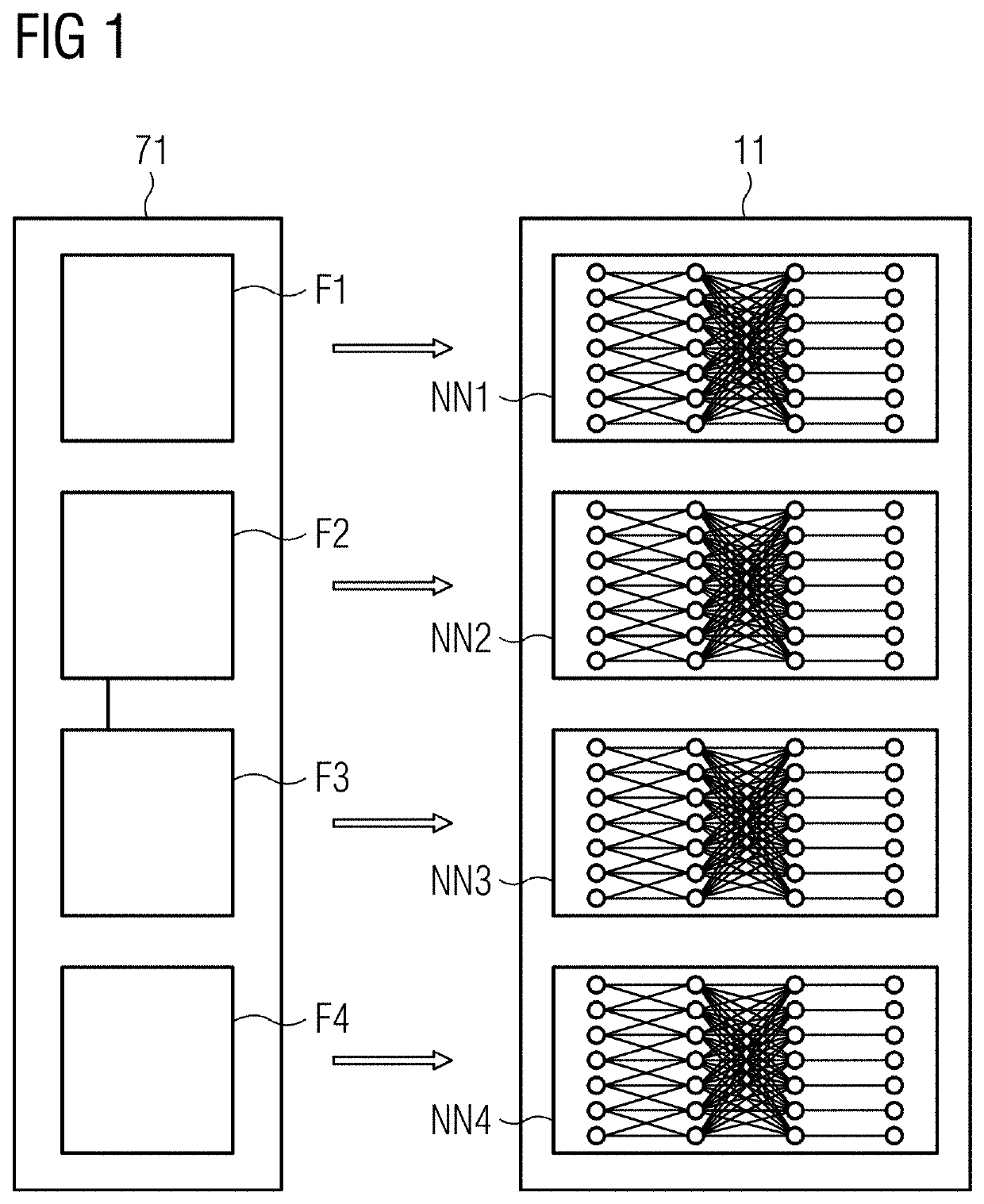Method of creating an image chain
a technology of image chain and image, applied in the field of creating image chain, can solve the problems of difficult and time-consuming identification of a satisfactory input parameter set for each method, difficult for the manufacturer of imaging systems, and difficult to determine the extent to which a specific parameter will affect the overall image quality, etc., to achieve less effort, optimize the effect of the image chain and reduce the number of parameters
- Summary
- Abstract
- Description
- Claims
- Application Information
AI Technical Summary
Benefits of technology
Problems solved by technology
Method used
Image
Examples
Embodiment Construction
[0032]In the figures, like numbers refer to like objects throughout. Objects in the diagrams are not necessarily drawn to scale.
[0033]FIG. 1 depicts an operation set 11 including a plurality of neural networks NN1, NN2, NN3, NN4. Each neural network NN1, NN2, NN3, NN4 is configured to perform a task corresponding to an image processing function F1, F2, F3, F4 that will be used in a block of an image chain. The intended image chain will be used to the same purpose as a conventional image chain that implements that set 71 of image processing functions F1, F2, F3, F4. Although the diagram indicates only four functions F1, F2, F3, F4 and their corresponding neural networks NN1, NN2, NN3, NN4, there is no limit to the number of functions implemented by an image chain.
[0034]FIG. 2 depicts an image chain 10 as created by an embodiment. The input to the chain 10 may be raw 2D image data D obtained from an imaging device such as an X-ray device, for example. The output of the chain 10 is a p...
PUM
 Login to View More
Login to View More Abstract
Description
Claims
Application Information
 Login to View More
Login to View More - R&D
- Intellectual Property
- Life Sciences
- Materials
- Tech Scout
- Unparalleled Data Quality
- Higher Quality Content
- 60% Fewer Hallucinations
Browse by: Latest US Patents, China's latest patents, Technical Efficacy Thesaurus, Application Domain, Technology Topic, Popular Technical Reports.
© 2025 PatSnap. All rights reserved.Legal|Privacy policy|Modern Slavery Act Transparency Statement|Sitemap|About US| Contact US: help@patsnap.com



